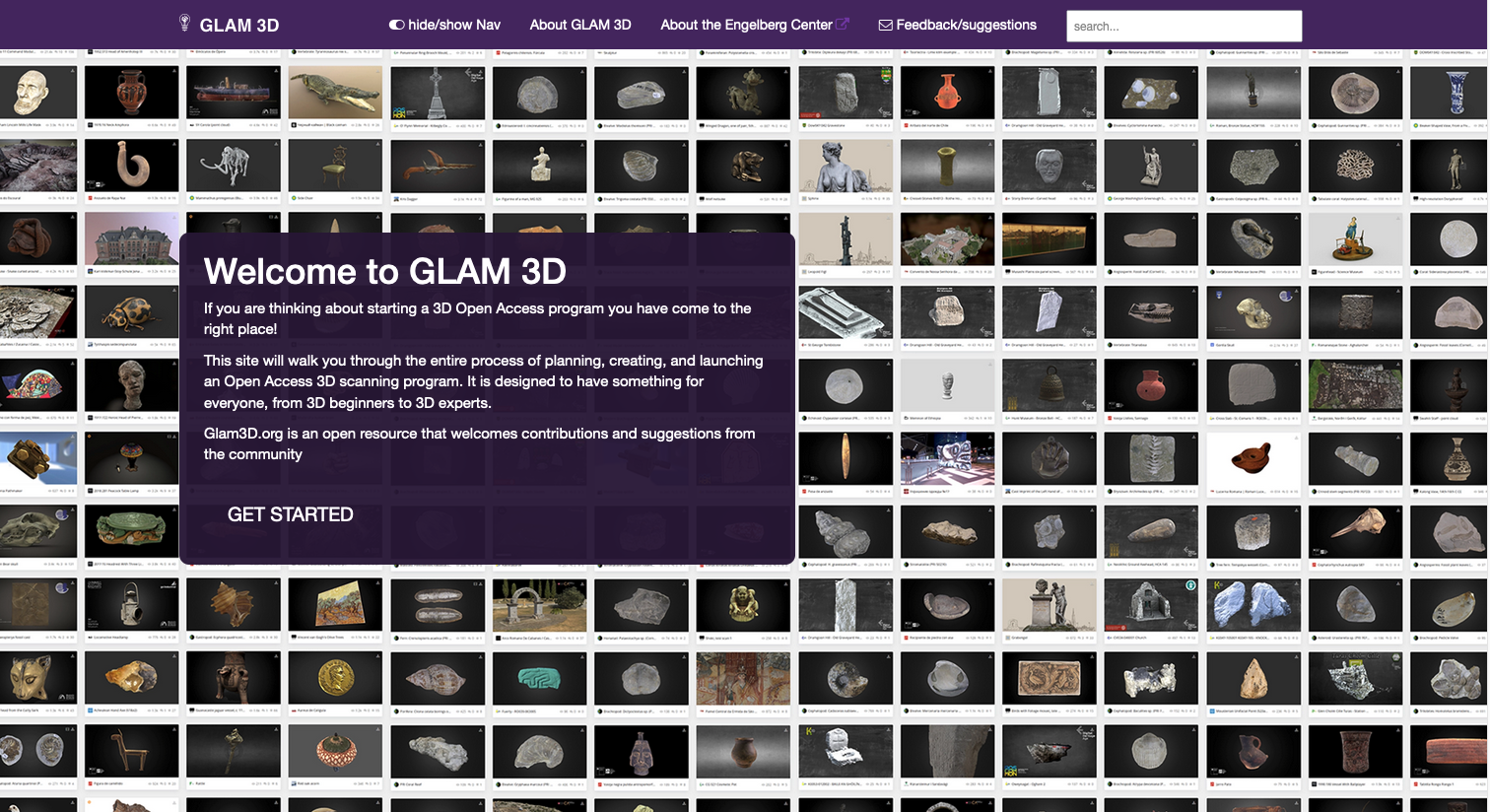Why Glam3D.org is a Website, not a PDF

Today the Engelberg Center launched Glam3D.org, a website that guides GLAM (Gallery, Library, Archive, and Museum) institutions through the process of creating an Open Access program for the three dimensional objects in their collections. You can read more about the site in our announcement post. This post will explain why we decided to build Glam3D.org as a website.
The project that would become Glam3D.org started as a more traditional whitepaper co-authored by Sketchfab Cultural Heritage Lead Thomas Flynn, Engelberg Center Fellow Neal Stimler, and Engelberg Center Executive Director Michael Weinberg. Engelberg Center whitpapers are designed to explore topics for audiences beyond academia, while providing depth of expertise that exceeds a blog post or shorter article. Because of this, the whitepaper format seemed to lend itself to a guide for creating a 3D Open Access program. That meant thinking about it as a document that would primarily exist as a PDF.
However, once we started writing the paper, we realized that we might also want to make an online version of the paper. One of our primary motivations for this was to make it easier to navigate. As the paper grew longer we realized that many elements were deeply connected to each other. Although there are centuries of formatting tricks that make it easier for readers to navigate complex paper documents, the linking structure of websites can make that process much more efficient.
We also wanted to take advantage of the fact that we were talking about 3D objects. Our original draft was full of flat screenshots of 3D models. Why not use the 3D models themselves? One of the points of the project was that it is easy to make 3D models available to people online. A website allowed us to do that.
Finally, we knew that we were capturing a fast moving process in its early stages. Although the document captures today’s best practices, we also assume that those best practices will evolve in the coming months and years. Furthermore, we anticipate (hope?) that the 3D Open GLAM community will contribute ideas and improvements to this project as those changes happen. Tracking that evolution over a series of PDF documents can be challenging. Maintaining a website may be a bit more straightforward.
For most of the drafting process we assumed that we would produce both a PDF and website version of the paper. However, as we got closer to finalizing things, we realized that subtle differences between the two formats were forcing us to maintain two substantially different documents. Hyperlinks in the online version needed to be additional footnotes in the PDF. Citations built into 3D viewers online needed to be captions below 2D images in the document. These differences compounded as we imagined tracking improvements and community suggestions across two different, increasingly divergent, formats.
That is why, fairly late in the process, we decided to go online-only. Doing so greatly simplified the finalization of the document and allowed us to assume that all readers could interact with 3D objects and easily follow outside links. We also hope it will make it easier to maintain the site going forward.
We recognize that this decision comes with some tradeoffs. There are still many people who prefer to read longer documents as digital PDFs or printed on paper (I count myself among them). We have designed the site so that it can be easily printed in most circumstances, which we hope will soften that blow.
It can also be harder to recognize changes between versions. Updating a PDF is often a fairly involved, obvious process. Changes to a website can be more subtle. While it is easy to tell people that they can check out our github repo for changes to the site, many people find github to be a foreign, complicated platform that is hard to navigate. We will include ‘last updated’ information in the footer of Glam3D.org, which hopefully will provide some indication as to when changes occur.
Like the GLAM sector’s adoption of 3D scanning that it documents, Glam3D.org is an experiment in its early days. We are excited to hear what you think about the project, and about the decision to make it a digital resource. We certainly plan to provide updates as the practice, and the site, evolve.
